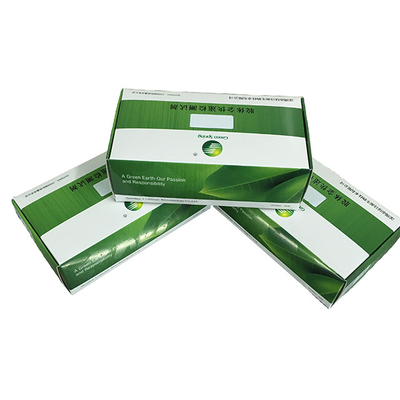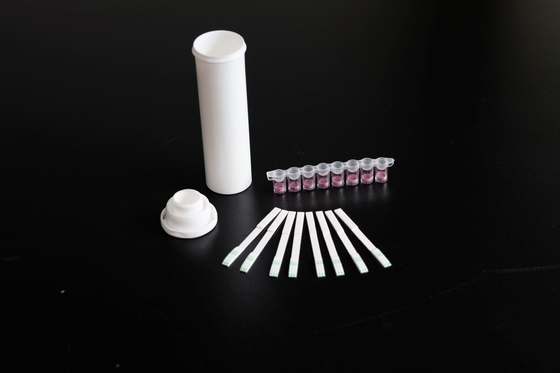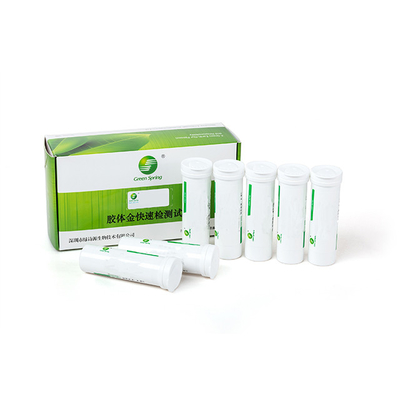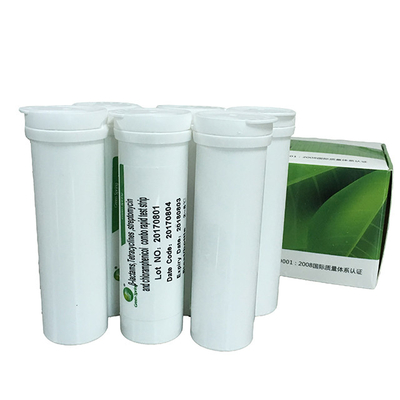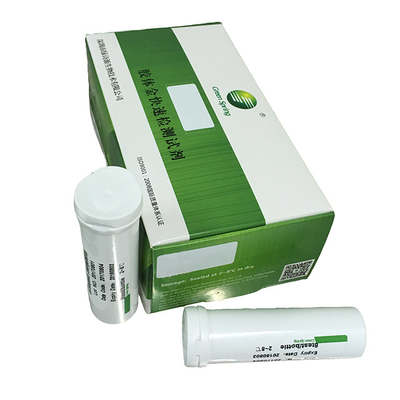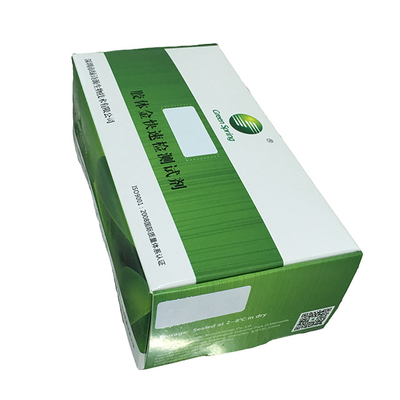|
|
LSY-20004 TheChloramphenicol rapid test kit for eggs 96 tests/kit
Product Details:
Payment & Shipping Terms:
|
| Specifications: | 96 Tests/kit | Sample Performance: | Honey, Tissue, Egg, Milk |
|---|---|---|---|
| Sensitivity: | 0.3ppb |
TheChloramphenicol(CAP) rapid test dipsticks (Eggs)
Tissue, honey, milk sample is available
Catalog No. LSY-20004
![]()
1. Brief
This product is used for testing theChloramphenicol in egg, duck egg sample qualitatively. Easy to operate, high sensitivity.
2. Detection limit
Honey: 0.3ng/ml (0.3ppb)
3. Contents
(1) 8 microwells and 8 dipsticks in one bottle 12 bottles / kit.
(2) Instruction 1 piece
(3) Sample buffer 1 bottle
4. Principle
TheChloramphenicol rapid test dipstick is based on competitive inhibition immuno-chromatographic principle. In the flow process, theChloramphenicol in the sample combined with theChloramphenicol specific colloidal gold-labeled monoclonal antibody, Inhibit the combination between antibody and theChloramphenicol-BSA conjugate on Test line of NC membrane, lead to the color change of Test line. When the sample has no theChloramphenicol residue or concentration lower than detection limit, T line is darker than C line or T line has same color with C line; when the concentration is equal to or higher than detection limit, T line is obviously lighter than C line or T line has no color. No matter whether there is theChloramphenicol residue in sample, C line will appear, it means the test is valid.
5. Sample preparation
Egg
Take 1g fresh even egg sample, add 3ml pure water, shake with hand or by oscillator strongly for 3 mins, ready to use.
6. Operation procedures
6.1 Read the instruction carefully before use. Return test dipsticks and sample into room temperature.
6.2 Take bottles needed from the kit package, take out required microwells and dipsticks, making proper marks. Please use these test dipsticks within 1h. Seal the cap of the bottles, avoid moisture.
6.3 Take 80ul of the test samples into the microwells, then repeatedly absorb for many times, mix the sample with the reagent in the microwells completely (this is a very important step).
6.4 Incubate for 5min at room temperature (20-25℃), insert the test dipsticks into the microwells with the "MAX" end fully dipped in to the mixture solution.
6.5 Incubate for 5-8min at room temperature again, read the result, it is invalid in other time.
7. Test Result Interpretation
7.1 Negative: T line is darker than C line, or T line has same color with C line. It means there is no theChloramphenicol residue in sample or the residue is lower than detection limit.
7.2 Positive: T line is obviously lighter than C line or T line is invisible. It means theChloramphenicol residue is equal to or higher than detection limit.
7.3 Invalidation: C line isn’t seen wine red. It means the test card is out of efficacy, out of date or improper operation. Please run the test again using another package. If the invalid tests keep happening, please contact the supplier.
![]()
9. Precautions
1) The test card can be used only once at room temperature, do not use test card out of expiry date.
2) Do not touch the white membrane surface in the middle of test card, avoid sunlight and fan blowing directly.
3) Use the test dipsticks testing again for positive results.
4) Please contact the supplier for any questions.
10. Specificity
Test 500ppb Sulfonamides, quinolones and tetracyclines and other drugs. All the results are negative.
11. Storage and expiry date
Storage: Store at 2-8 ℃ in dark, sealed, dry place, no frozen.
Expiry date: 12 months; date of production is on box.
![]()
![]()
![]()
-
LSY-20046 Tetracycline rapid test kit for eggs safety get result in 10 minutes 96 tests/kit
-
LSY-20047 Quinolone rapid test strip for eggs easy to operate with high sensitivity 96 tests/kit
-
LSY-20051 Nitrofuran(AOZ) rapid test kits for eggs 96 tests/kit
-
LSY-20050 Nitrofuran(AMOZ) rapid test kits for eggs 96 tests/kit
-
LSY-20040 Sulfonamides residues (SAs) rapid test strip eggs 96 tests/kit
-
LSY-20053 Nitrofuran(SEM) rapid test kits for eggs 96 tests/kit



